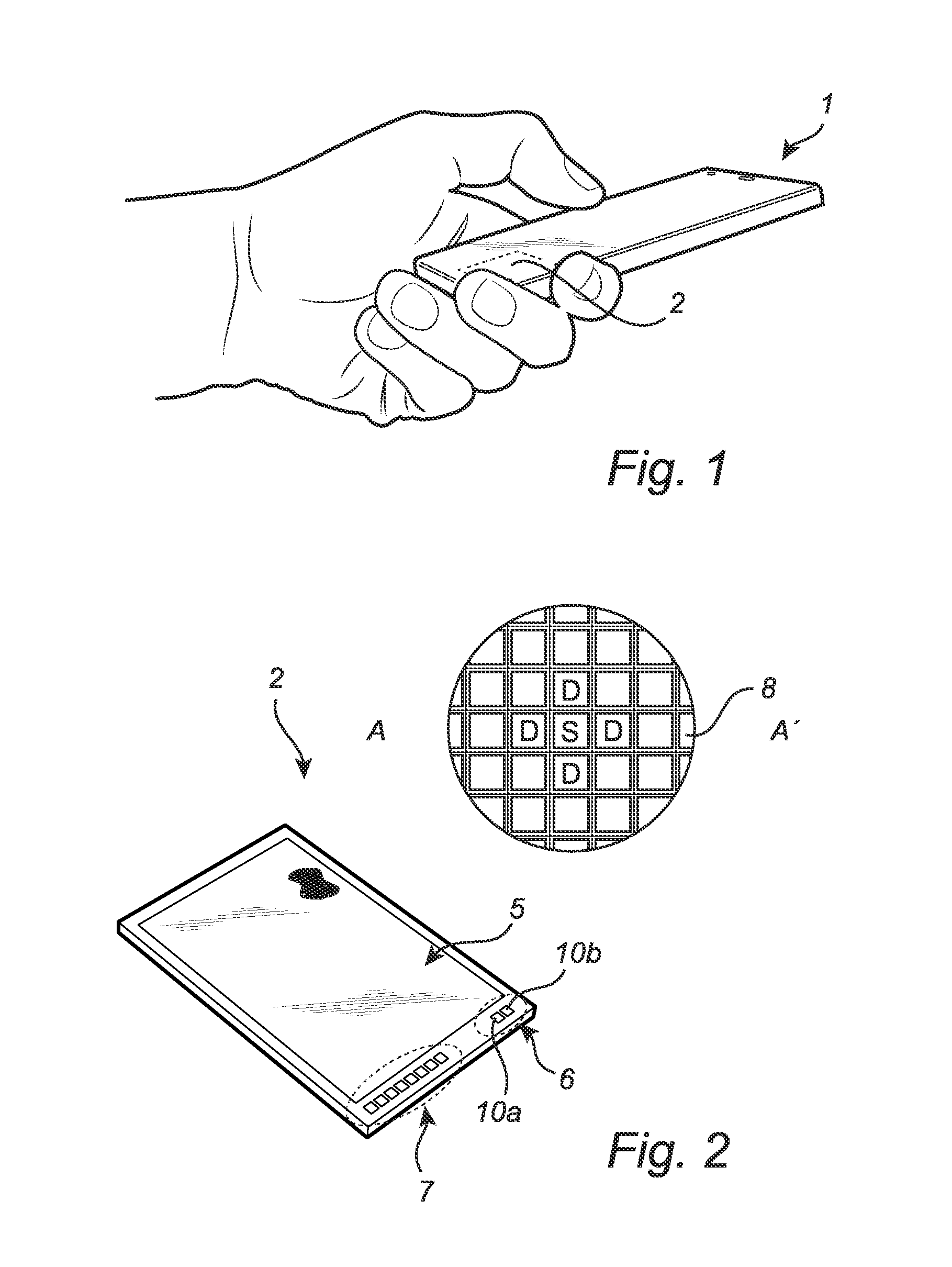Capacitive fingerprint sensor with improved sensing element
a fingerprint sensor and sensing element technology, applied in the field of capacitive fingerprint sensing devices, can solve the problems the fingerprint sensor with such a thin protective coating is not robust enough for many important applications, and the time-varying potential difference between the sensing structure and the semiconductor substrate, so as to reduce the influence of parasitic capacitance in the sensing elemen
- Summary
- Abstract
- Description
- Claims
- Application Information
AI Technical Summary
Benefits of technology
Problems solved by technology
Method used
Image
Examples
Embodiment Construction
[0066]In the present detailed description, various embodiments of the fingerprint sensing device and method according to the present invention are mainly described with reference to a fingerprint sensing device in which positive input of the charge amplifier and the well in which the sense transistor comprised in the charge amplifier is formed are connected together and accordingly controlled by the excitation signal providing circuitry to follow the same time-varying electrical potential (in relation to a reference potential, such as electrical ground). The shielding plate between the sensing structure (plate) and the underlying structures in the fingerprint sensing device is also connected to the positive input of the charge amplifier. Furthermore, the feedback capacitor is formed by the sensing plate, a reference plate in the same metal layer as the above-mentioned shielding plate and the dielectric layer between the sensing plate and the reference plate. Moreover, the fingerprin...
PUM
 Login to View More
Login to View More Abstract
Description
Claims
Application Information
 Login to View More
Login to View More - R&D Engineer
- R&D Manager
- IP Professional
- Industry Leading Data Capabilities
- Powerful AI technology
- Patent DNA Extraction
Browse by: Latest US Patents, China's latest patents, Technical Efficacy Thesaurus, Application Domain, Technology Topic, Popular Technical Reports.
© 2024 PatSnap. All rights reserved.Legal|Privacy policy|Modern Slavery Act Transparency Statement|Sitemap|About US| Contact US: help@patsnap.com










